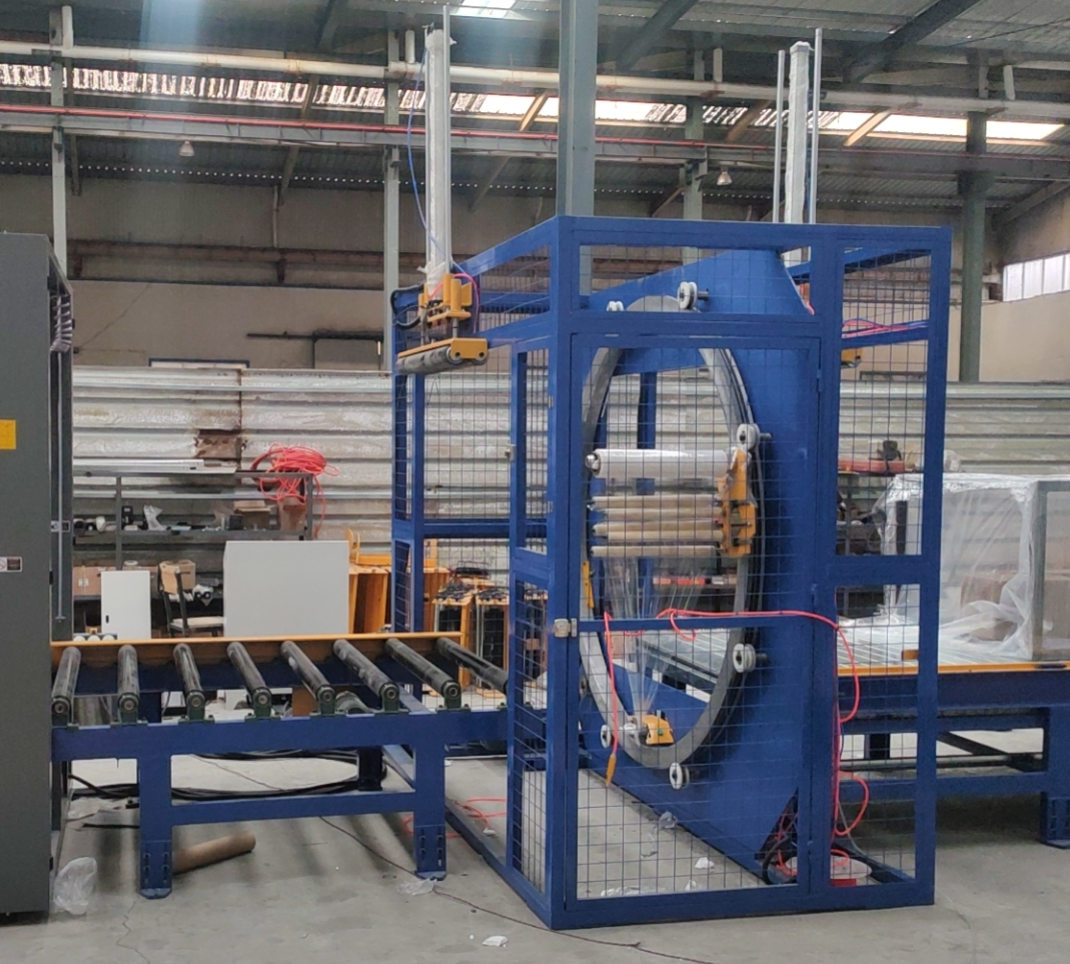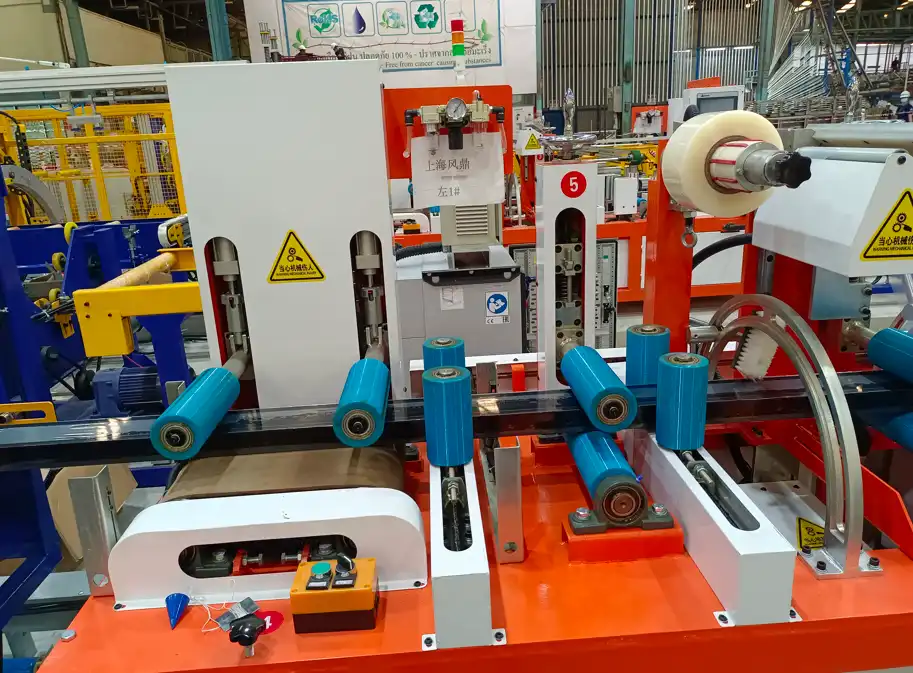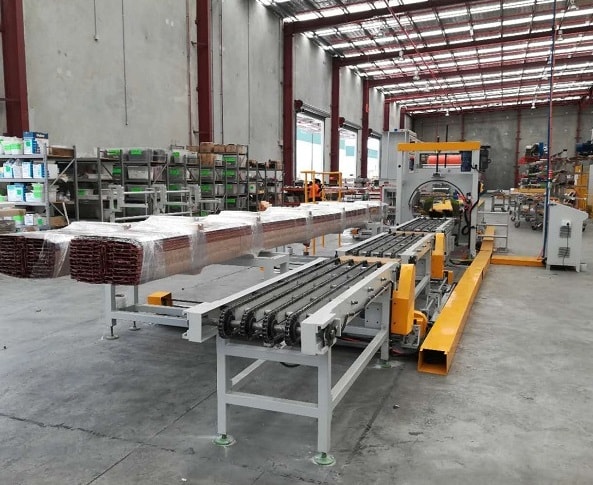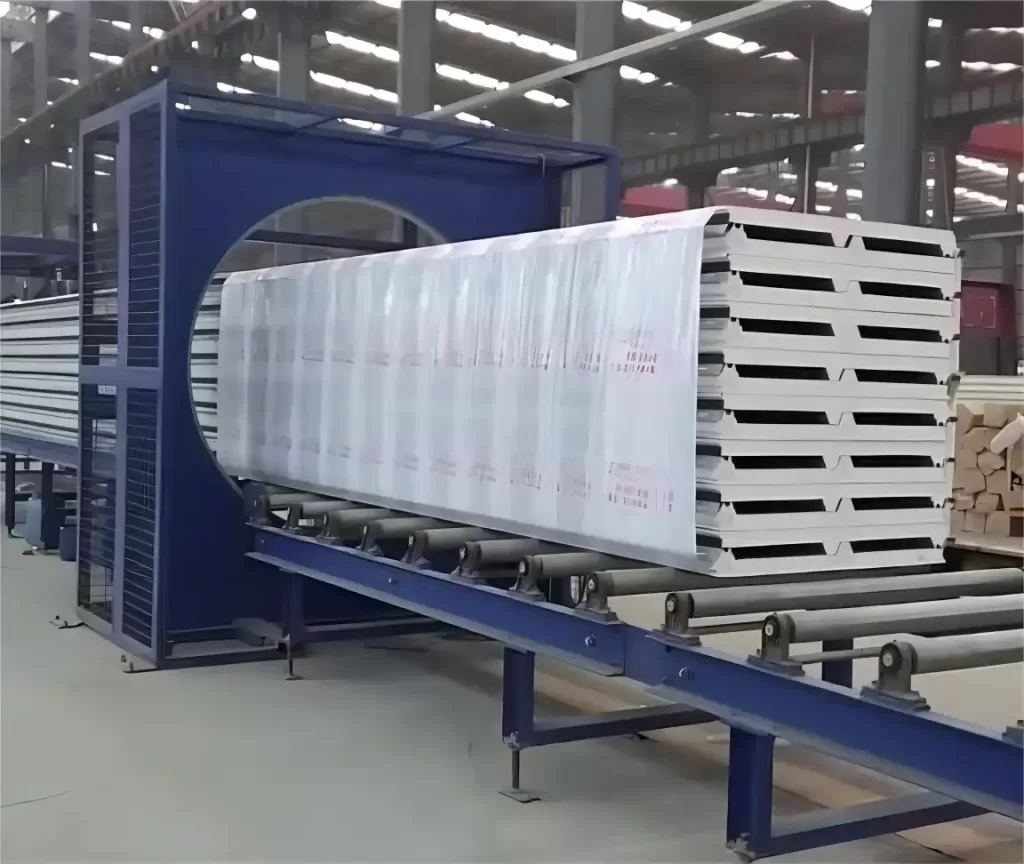Optimizing Packaging Processes for Aluminum Products
Protecting aluminum sheets, strips, foils, profiles, and wire during transport and storage requires specific handling and packaging techniques. Automated packaging machinery plays a crucial role in ensuring product integrity, efficiency, and safety throughout the supply chain. Understanding the various methods and available technologies is key to selecting the optimal solution.
This guide explores effective packaging strategies for different aluminum product forms, highlighting how automated systems can streamline these operations.
1. Packaging Aluminum Sheets

Aluminum sheets require careful handling to prevent scratches, dents, and corrosion. Common packaging methods include bottom locking boxes, standard boxes, plywood crates, and corner protection styles, many of which can be automated.
1.1. Standard Packaging Procedures
A typical process involves:
- Placing a protective plastic film at the bottom of the chosen container (box or crate).
- Adding a layer of neutral or weakly acidic moisture-resistant paper or a similar barrier material. This helps prevent chemical reactions and moisture damage.
- Loading the aluminum sheets using one of the following methods, depending on surface treatment and protection requirements:
- Applying oil and interleaving sheets with protective paper.
- Applying oil without interleaving paper.
- Packing sheets without oil but using paper or foam plastic sheets between them.
- Packing sheets without oil or interleaving materials (suitable for certain alloys or less critical applications).
- Packing sheets after applying a protective surface film.
- Adding a top layer of protective paper/film.
- Securing the package, often with steel or plastic strapping.
1.2. Automated Packaging Solutions
Specialized equipment can automate several stages of this process:
- Automatic Material Placement: Machines can dispense and position bottom layers of film and paper.
- Sheet Handling: Automated systems can carefully lift, transfer, and stack sheets.
- Oil Spraying: Integrated spray systems can apply protective oils uniformly.
- Top Layer Application: Automated placement of top protective layers.
- Strapping: Automatic or semi-automatic strapping machines apply steel or plastic bands to secure the load.
1.3. Simplified Packaging Approach

For less demanding requirements or short transit, a simpler method involves:
- Wrapping the sheets directly with neutral or weakly acidic moisture-resistant paper.
- Adding an outer layer of plastic film.
- Sealing the plastic film.
- Placing the wrapped bundle on a pallet or cushion block.
- Securing the bundle with steel or plastic straps.
1.4. Cost-Effective Options
In situations where minimal protection suffices, sheets might be placed directly onto a pallet or cushion blocks and secured simply with strapping. Automatic or semi-automatic strapping tools can still improve the efficiency of this basic method.
2. Packaging Aluminum Strips (Coils)
Aluminum strips, typically handled as coils, can be packaged for either vertical ("eye-to-sky") or horizontal ("eye-to-wall") orientation.
2.1. Vertical Strip Packaging (Eye-to-Sky)
Automated lines improve efficiency for vertical packaging:
- Feeding: Coils are fed vertically onto the packaging line.
- Wrapping: An automatic machine wraps the coil's circumference with neutral moisture-resistant paper, followed by a plastic film layer.
- Desiccant Insertion: Desiccant packs are automatically inserted into the coil's core during wrapping to absorb trapped moisture.
- Discharge & Boxing: Wrapped coils are transferred to a boxing station. Multiple coils can be efficiently placed and aligned vertically within cartons or crates.
- Sealing: Automated systems apply lids and seal the boxes, often with tape.
2.2. Horizontal Strip Packaging (Eye-to-Wall)
Horizontal packaging often involves these automated steps:
- Wrapping: An orbital wrapping machine wraps the coil circumferentially with paper and then plastic film, inserting desiccant into the core. For added rigidity, an outer layer of hardboard or similar material can be applied over the film.
- Transfer: Coils move via conveyor to a strapping station.
- Strapping: An automatic strapping system secures the coil(s). This might involve:
- Strapping individual wrapped coils directly.
- Placing coils onto a pallet structure (e.g., crisscross pallet bed) and strapping them securely to the pallet.
- Strapping multiple coils together before palletizing.
Automating these steps ensures consistent wrap quality, proper moisture protection, and improved throughput compared to manual methods. Integrated lines allow seamless transitions between wrapping, palletizing, and strapping.

3. Packaging Aluminum Foil
Aluminum foil, usually in rolls or coils, requires protection against moisture and physical damage.
3.1. Horizontal Foil Roll Packaging
- Wrapping: An automatic machine wraps each roll in neutral moisture-resistant paper, followed by a plastic bag. Desiccant is often inserted, and a cushion pad may be integrated.
- Sealing: The plastic bag ends are heat-sealed to create a moisture barrier.
- Orientation: If necessary, an automated turner or tilter positions the roll horizontally.
- Boxing: Conveyors transport rolls to packing stations. Manual or robotic arms place rolls into boxes, potentially side-by-side or in layers.
- Closing & Securing: Lids are automatically attached, boxes are tape-sealed, and integrated strapping machines apply reinforcement straps.
Customized packaging lines can handle various roll sizes and boxing configurations, ensuring consistent protection and efficient throughput.
4. Packaging Aluminum Profiles
Aluminum extrusions (profiles) require bundling and protection against surface damage and bending. Automated systems offer significant advantages.
4.1. Automated Profile Packaging Line
A typical automated line includes:
- Infeed: An automatic feeding system introduces individual profiles onto the line.
- Transfer: Mechanisms move profiles smoothly to the wrapping station.
- Wrapping: Profiles are typically bundled and then wrapped using orbital stretch wrappers or film taping machines for surface protection and unitization.
- Unloading & Alignment: Wrapped bundles are automatically unloaded and precisely aligned for stacking or further processing.
- Stacking/Bundling: Systems stack wrapped profiles or create larger bundles as required.
- Strapping/Bagging: Depending on requirements, bundles might be strapped for rigidity or placed into large bags for enhanced protection before final strapping or palletizing.
Fully integrated lines can be tailored from profile infeed to the final packaged load outfeed, optimizing protection and throughput for various profile shapes and lengths.
5. Packaging Building Profiles
Large quantities of building profiles often require robust palletized packaging.
5.1. Automated Pallet Wrapping Systems
- Bundling & Wrapping: Horizontal wrapping machines encase bundles of profiles on multiple sides with stretch film. Programmable wrapping patterns ensure complete coverage.
- Stacking: Robotic arms or automated stackers arrange wrapped bundles onto pallets in stable, organized layers.
- Pallet Strapping: Loaded pallets move to automatic strapping stations (e.g., 2, 3, 4, or 6-way strapping) that apply adjustable tension straps to secure the entire load. The stretch film layer provides a good surface for strap tensioning and adds to the overall stability.
Customizable solutions ensure efficient and secure containment for large volumes of building profiles, ready for transport and site delivery.
6. Packaging Aluminum Wire
Aluminum wire coils need protection from corrosion and handling damage. Automated packing lines can integrate various steps.
6.1. Coil Preparation & Wrapping
- Surface Treatment: Coils may be coated with oil or left untreated.
- Initial Wrap: Coils are often wrapped circumferentially with protective paper or burlap.
- Core Wrapping: An orbital wrapper can apply stretch film through the eye of the coil ("core wrapping") for added stability and protection.
- Outer Wrapping: Woven straps or additional film layers can be applied around the circumference.
- Handling: These steps can be standalone or integrated into conveyor lines with automatic centering and sensing capabilities.
6.2. Compression and Integrated Packaging
To optimize space and facilitate transport, wire coils often benefit from compression and integrated packaging functions:
- Compression: Reduces the coil's overall volume for efficient storage and shipping.
- Bundling: Secures the compressed coil to maintain its shape.
- Core Wrapping: Adds protection and stability post-compression.
- Pallet Wrapping: Secures multiple coils onto a pallet.
- Turning Over: Flips or rotates the coil/pallet for easier handling or access.
- Unloading: Automates removal from the packaging line.
- Separating from Stand: Prepares coils for distribution by removing them from processing stands.

Integrated systems combining compression, wrapping, and handling offer comprehensive solutions tailored to specific aluminum wire packaging needs, enhancing efficiency and product protection throughout the logistics chain.